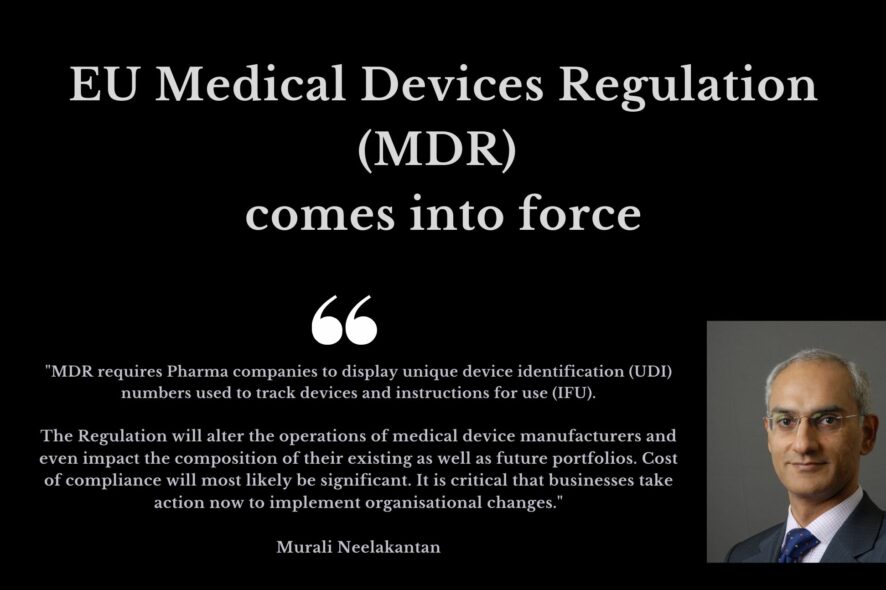On May 26, 2021 the EU Medical Devices Regulation (MDR) entered into effect after a four-year transitional period. The Regulation introduces various changes which will have an effect on the supply chain for medical devices.
Mr. Murali Neelakantan says that “MDR requires Pharma companies to display unique device identification (UDI) numbers used to track devices and instructions for use (IFU).
This Regulation will alter the operations of medical device manufacturers and even impact the composition of their existing as well as future portfolios. Cost of compliance will most likely be significant. It is critical that businesses take action now to implement organisational changes.”
Article 2 of Regulation (EU) 2017/745 defines ‘Medical device’ as any instrument, apparatus, appliance, software, implant, reagent, material or other article intended by the manufacturer to be used, alone or in combination, for human beings for one or more of the following specific medical purposes:
- diagnosis, prevention, monitoring, prediction, prognosis, treatment or alleviation of disease,
- diagnosis, monitoring, treatment, alleviation of, or compensation for, an injury or disability,
- investigation, replacement or modification of the anatomy or of a physiological or pathological process or state,
- providing information by means of in vitro examination of specimens derived from the human body, including organ, blood and tissue donations,
and which does not achieve its principal intended action by pharmacological, immunological or metabolic means, in or on the human body, but which may be assisted in its function by such means.
The following products shall also be deemed to be medical devices:
- devices for the control or support of conception;
- products specifically intended for the cleaning, disinfection or sterilisation of devices as referred to in Article 1(4) and of those referred to in the first paragraph of this point.
The new EU MDR regulation aims to create a new and improved landscape for the medical devices industry, with the following guidelines:
- All medical devices will have to undergo an independent assessment of safety and performance before they can be marketed in the EU.
- There will be greater transparency of information on the benefits for patients, residual risks, and a thorough assessment of the overall risk/benefit ratio will be necessary.
- There will be clearer rules in place to enable standardisation and support simpler and less complex trading between EU member states.
- The new rules support patient-oriented innovation and take particular account of the specific needs of the many small and medium sized manufacturers in this sector.
- The EU MDR will place further responsibilities on “Notified Bodies” – those independent third parties that perform conformity assessments for medium and high risk devices. The Notified Bodies will be subject to heightened scrutiny from competent authorities and will need to be designated under the EU MDR, with the process of designation coordinated at a European level.
- Non-compliance of the Regulation will impose penalty.
In order to put a required system in place for risk and quality management and to conduct clinical or performance evaluations, the Regulation clarifies the respective obligations of manufacturers, authorised representatives, importers and distributors.







